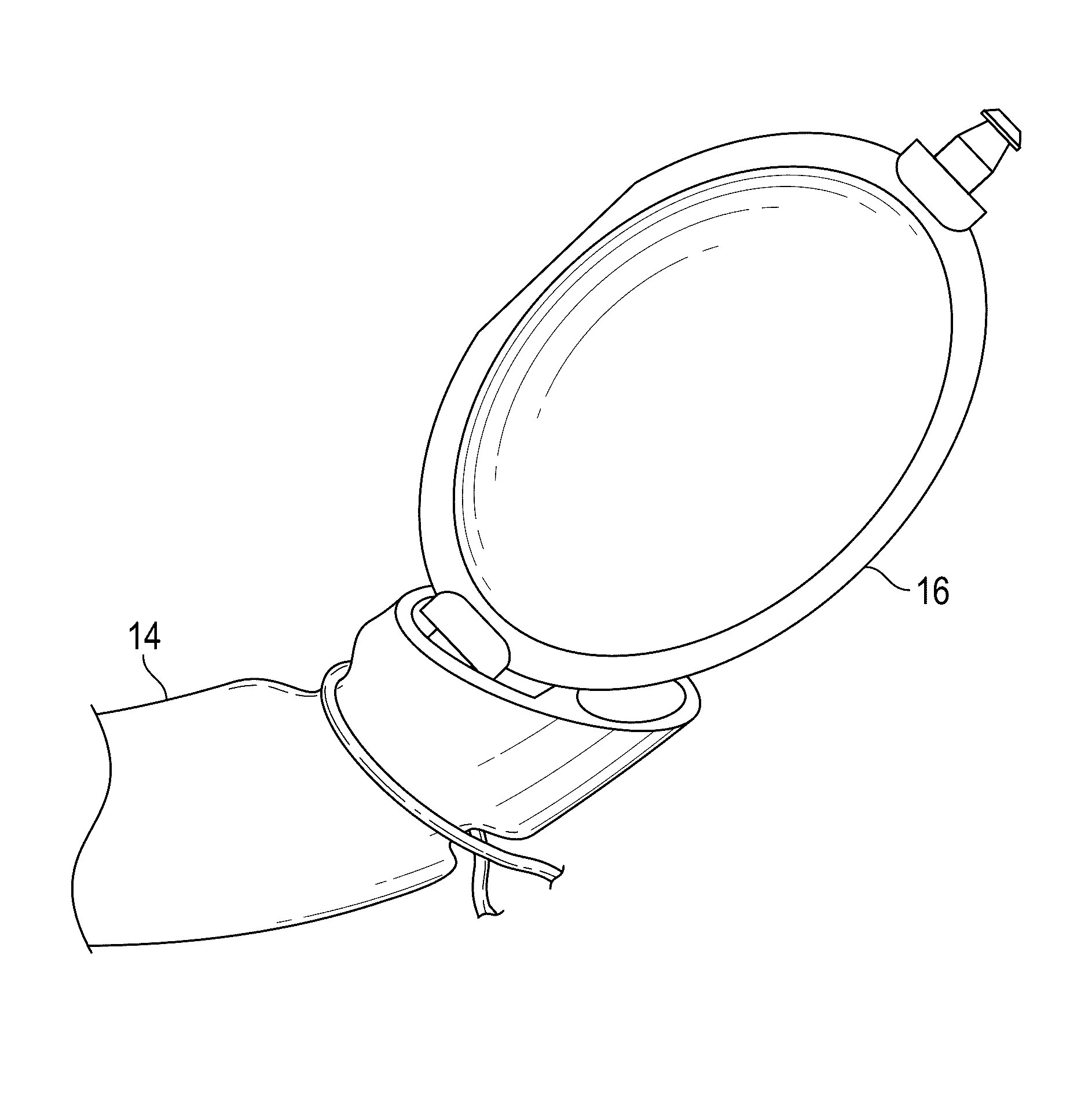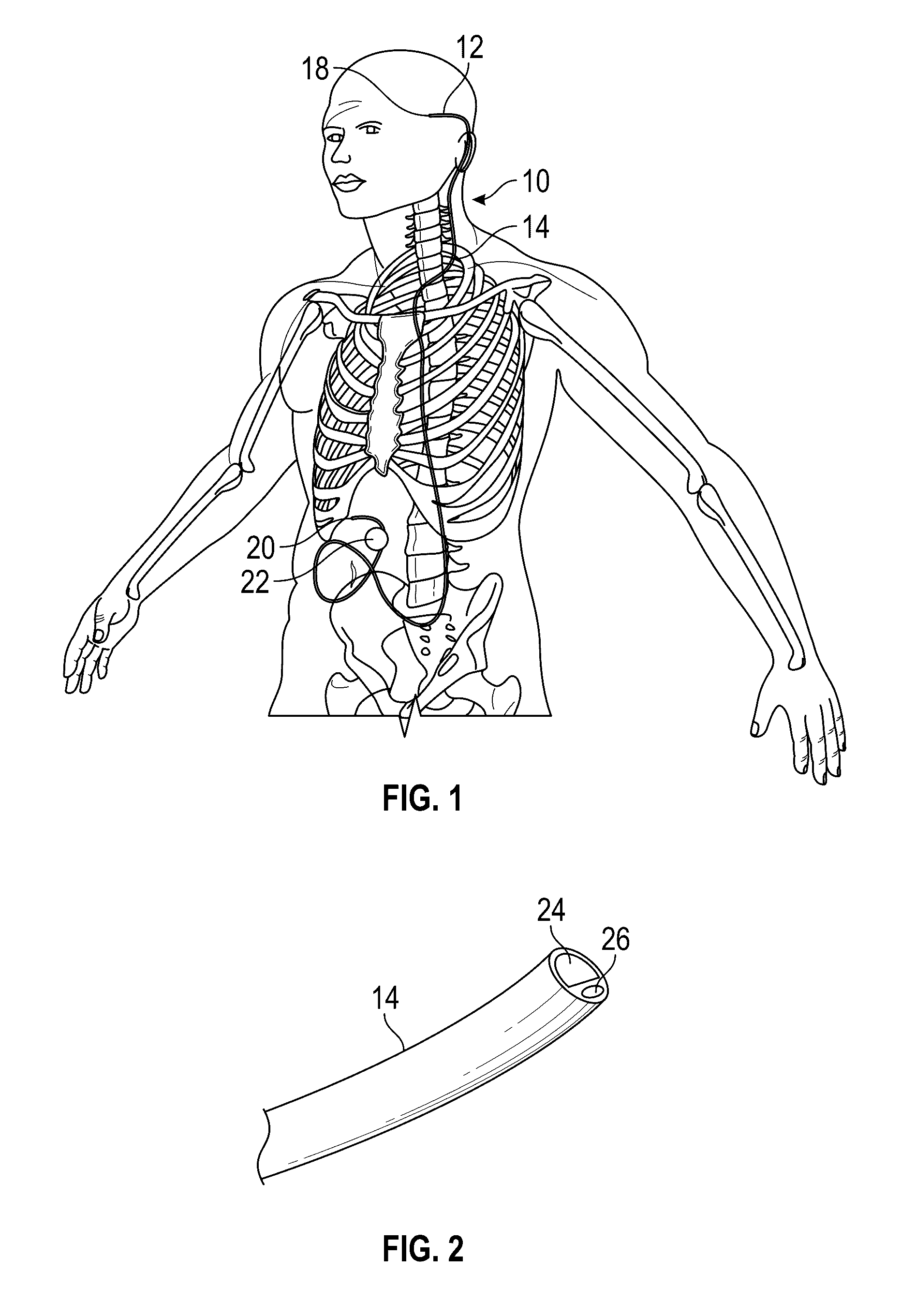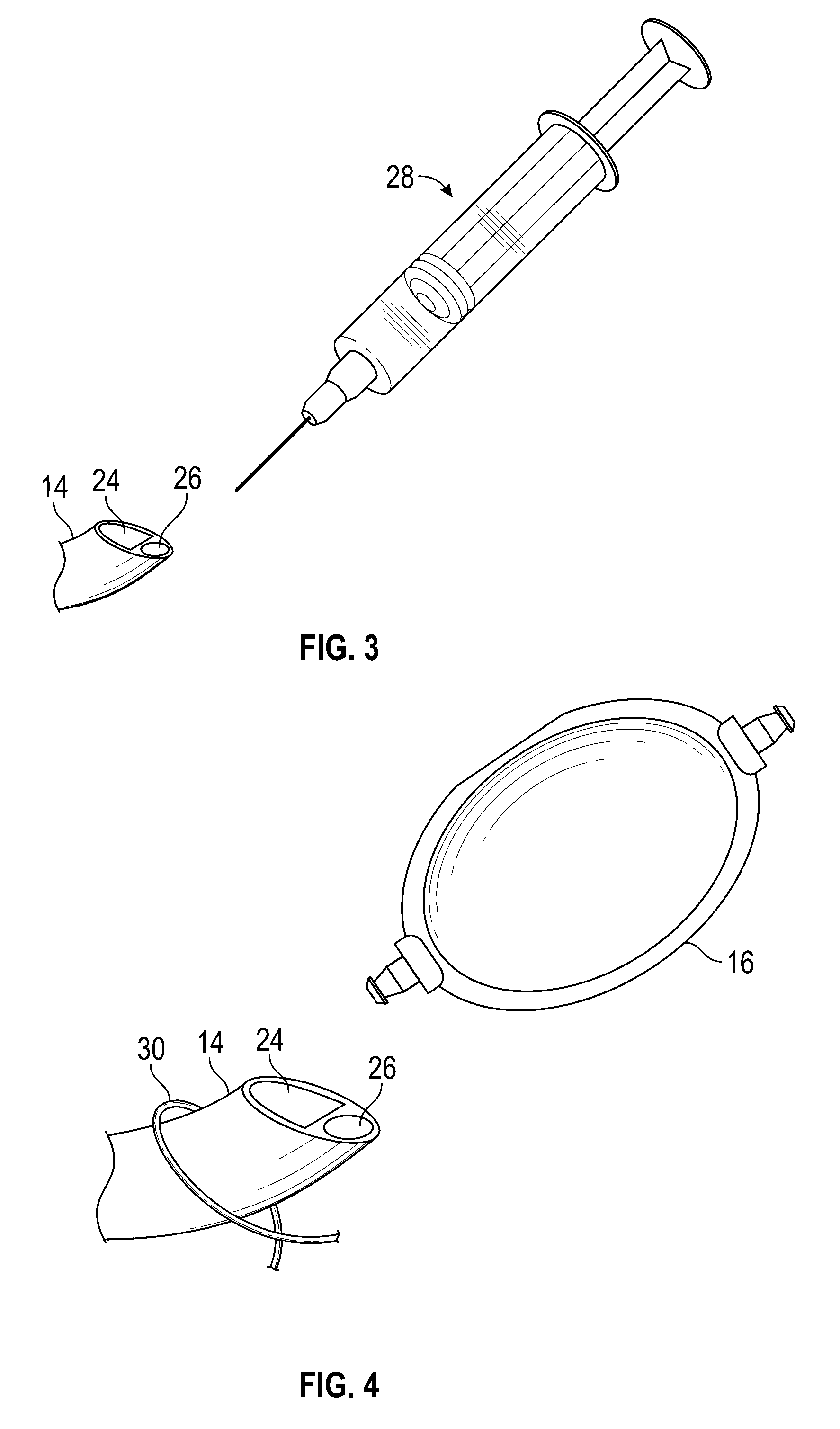Ventriculoperitoneal shunt with distal balloon
a technology of ventriculoperitoneal shunt and balloon, which is applied in the direction of balloon catheter, wound drain, etc., can solve the problems of increased icp, serious neurological problems, and 40% failure rate of vp shunt within two years
- Summary
- Abstract
- Description
- Claims
- Application Information
AI Technical Summary
Problems solved by technology
Method used
Image
Examples
Embodiment Construction
[0026]The ventriculoperitoneal shunt 10 of the invention includes a proximal or ventricular catheter 12 and a distal or peritoneal catheter 14. A shunt valve 16 connects the adjacent ends of the catheters 12, 14. The proximal or free end 18 of the ventricular catheter 12 is adapted to be inserted into the brain ventricle, while the distal or free end 20 of the peritoneal catheter 14 is adapted to be inserted into the peritoneal cavity, with the catheter 12 tunneling beneath the skin between the opposite ends 18, 20. The catheters, when connected to the valve 16, form a continuous catheter drain path from the brain ventricle to the peritoneal cavity.
[0027]The above described structure for the VP shunt 10 is conventional.
[0028]The present invention improves the conventional VP shunt 10 by incorporating an inflatable balloon 22 on the distal end of the catheter 14. The balloon resides within the peritoneal cavity, and is surgically implanted in a deflated condition. During surgery, the...
PUM
 Login to view more
Login to view more Abstract
Description
Claims
Application Information
 Login to view more
Login to view more - R&D Engineer
- R&D Manager
- IP Professional
- Industry Leading Data Capabilities
- Powerful AI technology
- Patent DNA Extraction
Browse by: Latest US Patents, China's latest patents, Technical Efficacy Thesaurus, Application Domain, Technology Topic.
© 2024 PatSnap. All rights reserved.Legal|Privacy policy|Modern Slavery Act Transparency Statement|Sitemap



